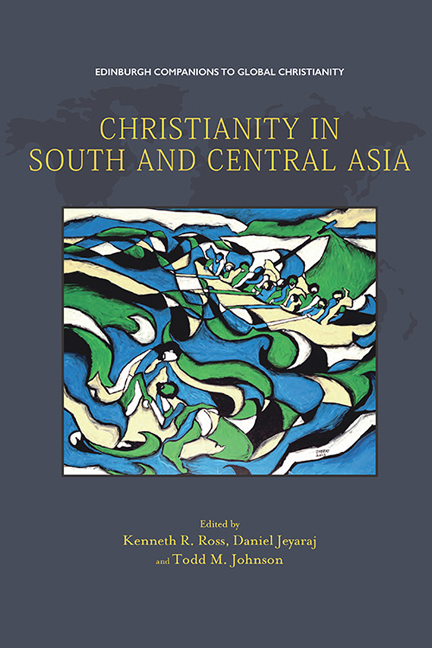Volume Preface
Published online by Cambridge University Press: 30 April 2020
Summary
This volume combines two United Nations regions, South and Central Asia. Both are marked by religious diversity. Hinduism is the dominant faith in India and Nepal; Islam in the Maldives, Bangladesh, Pakistan and Central Asia; and Buddhism in Sri Lanka and Bhutan. In every context, however, different religious communities, Christians included, meet and engage with one another. The Christian presence is varied, shaped by different historical patterns and presenting a wide range of complexions today. The contexts in which Christian communities find themselves also vary markedly. While some contexts present severe restrictions and even active hostility and harassment, others offer new opportunities and a favourable climate for the development of church life. Many factors are at play, calling for careful mapping and incisive analysis if justice is to be done to the richness and vitality of the Christian presence in this part of the world.
In pursuit of understanding, this volume offers four angles of analysis. The first is demographic, using the methodology of the highly successful Atlas of Global Christianity (Edinburgh University Press, 2009) to present reliable statistical information in an attractive, user-friendly format. Maps and charts depict the status of Christianity regionally and in terms of the principal church traditions. Christians form a small minority in all countries in this region, but in many places they constitute significant communities, some sustaining ancient traditions, others representing new movements.
The second angle of analysis is at the country level. Account is taken of the presence and influence of Christianity in each of 14 countries in South and Central Asia. Scholars who are either indigenous or have long experience of the region have contributed interpretative essays that offer a ‘critical insider’ perspective on the way in which Christianity is finding expression in their context. Most countries are the subject of a dedicated essay, while India, in view of its size and population, is divided into four parts for the purpose of the essays.
Thirdly, Christianity in South and Central Asia is considered in terms of its principal ecclesial forms or traditions. Six types of church are considered: Catholic, Orthodox, United, Protestant, Anglican and Independent.
- Type
- Chapter
- Information
- Christianity in South and Central Asia , pp. x - xiPublisher: Edinburgh University PressPrint publication year: 2019

